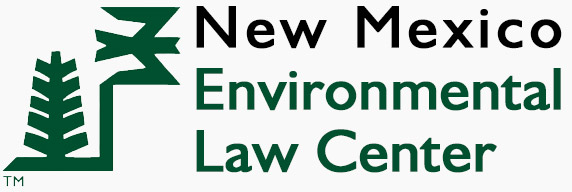Printed in the Albuquerque Journal on March 27, 2014
By Douglas Meiklejohn / Executive Director, New Mexico Environmental Law Center
Groundwater provides the drinking water for 90 percent of the people in New Mexico. For that reason, whether the recently adopted regulation that addresses groundwater pollution by copper mines (commonly referred to as “the Copper Rule”) adequately protects New Mexico’s groundwater is a very significant issue.
Officials of the New Mexico Environment Department, including its new Secretary, Ryan Flynn, have attempted to defend the Copper Rule by asserting that it is the most protective regulation in the country.
That assertion is not accurate.
The Rule provides less protection than comparable laws in Arizona and Nevada, where copper is also mined.
For example:
- Arizona law expressly prohibits pollution that may impair present or future uses of groundwater. The Copper Rule does not.
- Arizona law imposes strict limits on pollution that does not impair present or future uses of groundwater. Arizona law requires that pollution by “hazardous substances” be limited to the footprint of the mine waste dump and that pollution by “non-hazardous substances” be limited to the area within the mine property or within 750 feet of the pollution source, whichever is smaller. The Copper Rule places no limit on how far groundwater pollution caused by a mine can spread.
- Nevada prohibits pollution of all waters of the state. The Copper Rule does not.
- Nevada law requires that groundwater pollution be cleaned up within 30 years. The Copper Rule allows pollution to remain forever.
For these and other reasons, the assertions by the department and Flynn that the Copper Rule provides the most stringent protection for groundwater in the country are simply not correct.
Moreover, the Copper Rule provides significantly less protection for groundwater than the regulations it replaced here in New Mexico.
The regulations in place before the Copper Rule was adopted expressly prohibited pollution of groundwater at any place of present or potential future use of the groundwater. The only possible exceptions occurred if the mine operators obtained variances.
Variances were granted on a case-by-case basis only if the mine operators proved all of the following: that meeting water quality standards posed an unreasonable burden; that the pollution would be abated within a reasonable time; and that the pollution would not impair any present or future use of groundwater.
Moreover, no variance could be granted unless a public hearing was held in which neighbors and other interested persons could participate, present their views and protect their water supplies from pollution.
In contrast, the Copper Rule expressly authorizes extensive groundwater pollution to continue forever at all existing and future open pit copper mines. And the Copper Rule makes no provision for a public process in which neighbors of a mine can protect the groundwater that they use.
The Copper Rule is a blank check to the copper mining industry drawn on New Mexico’s most precious resource, its groundwater.
The Environment Department and Flynn should admit this rather than continuing to misrepresent the rule and how it compares to laws in other states.
Also signed by Brian Shields, executive director of Amigos Bravos, and Allyson Siwik, executive director of the Gila Resources Information Project.
